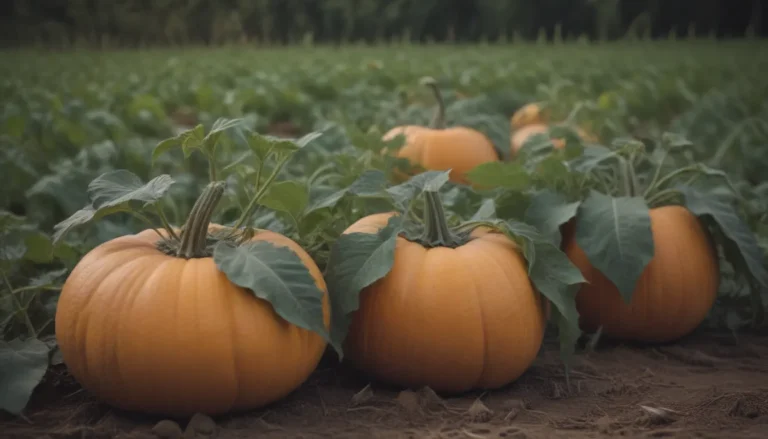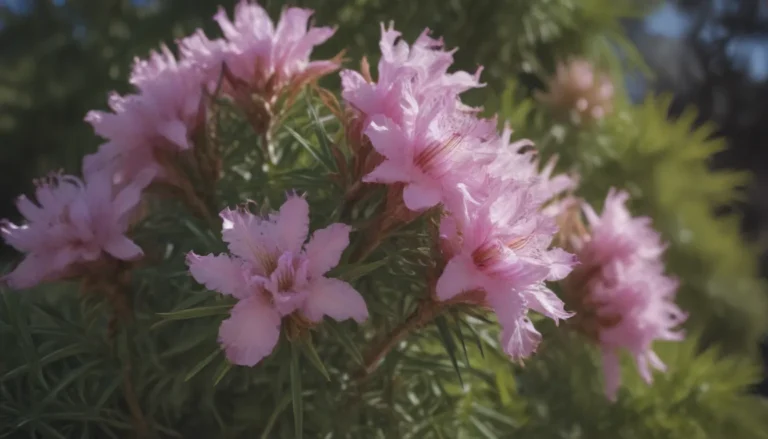The Ultimate Guide to Growing and Caring for Common Cattails

If you’re looking to add a touch of nature to your garden or landscape, common cattails are a wonderful choice. Known for their tall, cylindrical inflorescence and lush, green leaves, these perennial aquatic plants can bring a sense of tranquility to any space. In this comprehensive guide, we will delve into everything you need to know about growing and caring for common cattails, from planting to propagation and beyond.
Getting to Know Common Cattails
You might recognize common cattails by their alternate name, bulrushes. These plants are native to temperate regions in North America and are commonly found growing in shallow waters in marshy areas and wetlands. With an upright growth habit and a rhizomatous root system, common cattails can quickly form thick clumps that provide cover and food for wildlife. It’s essential to select a native species like Typha latifolia to avoid introducing invasive cattails into your environment.
Cattail Plant Care 101
With the right conditions, growing cattails can be a rewarding and relatively low-maintenance experience. Let’s explore the key care requirements for cultivating healthy and thriving common cattails:
Light
Cattails thrive in full sun or partial shade and cannot survive in full shade. Ensure they receive adequate sunlight to promote healthy growth.
Soil
These plants prefer rich, loamy soil with plenty of organic matter. While they can adapt to various soil types, providing nutrient-rich soil will help them thrive.
Water
As marshland plants, cattails require ample moisture to thrive. Keep the soil consistently wet, making them ideal for areas where water naturally collects. They can flourish in standing water.
Temperature and Humidity
Although commonly found in temperate regions, cattails can also thrive in subtropical and elevated tropical areas. Established cattails are resilient to harsh winters and can reliably return year after year.
Fertilizer
Cattails generally do not require fertilization, as they can obtain the nutrients they need from their environment.
Pruning
Pruning cattails in the fall can help manage their growth. Cut them back about 8 inches above the water’s surface or to the ground if not in standing water. New growth will emerge in the spring.
Propagation
Cattails can propagate through rhizomes and self-seeding. Divide young shoots in the spring to create new clusters of plants or grow them from seeds for a rewarding gardening experience.
Types of Cattails to Explore
While common cattails are a popular choice for many gardeners, there are other species that may interest you:
- Dwarf Bulrush (T. minima)
- Graceful Cattail (T. laxmannii)
- Narrowleaf Cattail (T. angustifolia)
These species offer unique characteristics and can add diversity to your garden landscape.
How to Grow Common Cattails from Seed
If you’re starting cattails from seeds, ensure they have consistent moisture for successful germination. Sowing them near a water source can simplify the process. Here’s how you can start cattail seeds indoors:
- Sow seeds on the surface of moist soil
- Keep the soil consistently moist
- Place them near a water source for easy access to moisture
Potting and Repotting Common Cattail Plants
When growing cattails in containers, opt for dwarf varieties like dwarf bulrush. Follow these steps for potting and repotting your cattail plants:
- Choose a sturdy container with loamy clay soil
- Place the plant in the pot with the crown just above the soil line
- Mulch with gravel or crushed stones
- Check for root-bound plants in the spring and consider repotting as needed
Common Pests and Diseases
Cattails are generally resilient to pests and diseases, but larger creatures like crayfish or muskrats may feed on them. Vigilance and proper care can help prevent significant issues.
Enhancing Your Landscape with Cattails
Cattails are versatile plants that can enhance various outdoor settings. Here are some ideas for incorporating cattails into your landscape:
- Around ponds or water gardens
- For erosion control on wet slopes
- As a privacy screen
- In flower arrangements, fresh or dried
Consider native alternatives like willows, big bluestem grass, or Joe Pye weed if you prefer plants that are equally attractive without invasive tendencies.
Celebrating the Beauty of Cattails in Bloom
Cattail flowers bloom in the summer months, showcasing their unique cylindrical shape and dense petal-less flowers. Here’s what you need to know about cattail blooms:
- Bloom Months: May through July
- Duration of Bloom: Summer to early fall
- Appearance and Scent: Spike-shaped flowers with a subtle scent
Deadheading cattail flowers in the fall can help control their spread and prevent them from becoming invasive. You can also explore recipes to incorporate edible parts of the cattail plant into your culinary adventures.
In conclusion, common cattails are a fantastic addition to any garden or landscape, providing beauty, wildlife habitat, and practical uses like erosion control. By following the care tips outlined in this guide, you can cultivate healthy and thriving cattails that will enhance your outdoor space for years to come.
Whether you’re a seasoned gardener looking to diversify your plant collection or a nature enthusiast eager to create a wildlife-friendly environment, common cattails are a fantastic choice. With their unique characteristics and ecological benefits, these plants offer a wealth of opportunities to explore and enjoy the wonders of nature in your own backyard.
So go ahead, plant some common cattails, and watch as these majestic plants transform your outdoor space into a haven for both humans and wildlife alike. Happy gardening!





